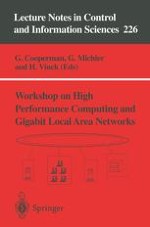The combination of fast, low-latency networks and high-performance, distributed tools for mathematical software has resulted in widespread, affordable scientific computing facilities. Practitioners working in the fields of computer communication networks, distributed computing, computational algebra and numerical analysis have been brought together to contribute to this volume and explore the emerging distributed and parallel technology in a scientific environment. This collection includes surveys and original research on both software infrastructure for parallel applications and hardware and architecture infrastructure. Among the topics covered are switch-based high-speed networks, ATM over local and wide area networks, network performance, application support, finite element methods, eigenvalue problems, invariant subspace decomposition, QR factorization and Todd-Coxseter coset enumeration.
